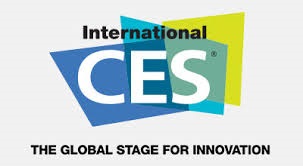The 2015 International CES: What You'll See - Shelly Palmer

The 2015 International CES® (January 6-9, Las Vegas) is one of the world’s largest trade shows. Its sheer size can be daunting… over 150,000 attendees will visit over 3,600 exhibitors covering over 2,000,000 sq. ft. of exhibit space. Where do you start? Here’s a quick overview of what to see and do, and a look at some of the most prevalent themes.
What’s Where?
This year, the show is laid out in a new way –Tech East and Tech West. Tech East (in the Las Vegas Convention Center or LVCC) focuses on the more traditional CE markets like TVs, appliances, autos, digital imaging/cameras, etc. Tech West (at the Sands Convention Center) focuses on the emerging technologies like wearables, 3D printing, smart home and similar markets. And, this year, for the first time, technology, media, marketers, content creators, and dealmakers will congregate at the Aria Hotel in the new C-Space.
Shameless plug… we have a full slate of events and meet & greets at C-Space. You can request invitations to our IoT , BioElectronics and CyberSecurity meet & greets, Innovation Series Breakfasts and Daily Wrap-up Cocktail Receptions at ces.shellypalmer.com . You can also book VIP Floor tours , get access to our 2015 CE Trend report, see our picks for the best exhibits and find lots of information that will help you maximize your time at the show.
Startups & Eureka Park
Start-ups will be even more important at CES this year. Four years ago, Eureka Park - the section for start-ups - had just 50 exhibitors. This year there will be 375, up from 220 last year. Some of these nascent companies will spend more attending CES than they spent to start their organizations. What makes a successful startup? As you can imagine, there are huge lessons to be learned at Eureka Park.
Hype vs. Reality
The big buzz items this year will be 4K TV (aka UltraHD or UHD), streaming capabilities and services, wearables, smart homes, smart cars, and 3D printing. Despite all the hype, the overall consumer electronics market has actually slowed down over the past few years, from growth of about 7.7% in 2011 to just about 2% in 2014.[1]
Although they collectively represent just 3% of the total CE market, 3D printers, health and fitness devices, smart watches, UHD TVs, and smart thermostats increased sales by 240% YoY and are expected to grow another 108% in 2015. Mobile devices remain a large share of the market with smartphones and tablets making up over 35% of total CE revenue.[2]
Consumer electronics are still favorite gifts for many--tablets, computers, TVs, smartphones and game consoles are the big holiday items, and they make up 51% of the entire tech spending in 2014.[3]
And this year consumers will be buying online – 54% of consumers will buy their stuff online – but... and it's a big but... 77% of all consumer electronics will still be purchased in a traditional brick and mortar store. Traditional retail is not dead, but the trend is clear. Consumer behavior is changing, and changing fast... and that will be a big story for CE retailers this year.
Four Theses
There are four theses that may help you navigate CES this year: Connectivity, Personal Data Centers, "Access vs. Ownership" and "Screens & Consumption Environments." Let's start with Connectivity.
Connectivity
Almost everything at CES is purpose built to interact (passively or actively) with you and other devices over some kind of network. From connected cars to connected silverware, practically everything at the show will connect to something. But, there are two very different schools of thought regarding connectivity. One school believes stand-alone ecosystems are the best strategy. Think Apple, Android, and to a lesser extent, Samsung, Sony and LG's proprietary linkage tools. The other school is pushing for broad interoperability. This has been a constant state-of-the-business battle for years and it will continue.
Speaking of Sony, both camps are dealing with an enhanced need for security and privacy protocols and for the first time, there are areas on the CES show floor dedicated to each.
Personal Data Centers
In 2015, your Smartphone is still going to be the center of your electronic universe – and, it's going to know more about you than it ever did before. Smartphones are “the” central data gathering point for your connected life and average users check them about 150 times each day. Of course, we will see new mobile devices this year: wearables, smart cars, smart homes, and more—but, they will all connect to and through your smartphone. So for 2015, yep, there's still an app for that.
What needs to evolve? We'll see lots of companies working on anticipatory computing, data gathering, privacy and security. You know that story, if you're not paying for a service with cash, the company is using your data as a currency – this will be in evidence all over the CES show floor.
Access vs. Ownership
The purchase of physical media (CDs, DVDs, etc.) continues to decline and the downward trend is accelerating. Digital media downloads are declining as well. Consumers are increasingly comfortable with “renting” content by paying for access to subscription services – music, movies, TV shows, and even games and books are all moving towards an access model. In short, “renting is up, buying is down.” This may have a corollary effect in the TV and online video markets. The pressure for pay services to unbundle, along with the appearance of over the top (or OTT) services is causing waves of disruption in the television landscape – the technology is forcing us to redefine “TV.”
Screens & Consumption Environments
Screens come in every conceivable size and, in most cases, they try to do too many things. Prices are under immense downward pressure, and markets are maturing. Smartphone sales in the US are flattening, tablet sales are flattening, but… PC sales, which have been falling, are stabilizing, and new screens, such as those found on wearables, watches, and appliances are finding their way.
Wearables are everywhere, but the market isn’t quite ready. The trend is important and there is no doubt wearables, smart home and other connected world devices will have a big impact over the next several years. However, this year there are just too many wearable offerings with too little differentiation, and smart homes suppliers are still trying to convince consumers they really do need smart doorknobs and smart silverware.
There’s So Much More To See And Do
These are just a few of the broadest themes and technologies you can expect to see. CES is more than a trade show, it has become a central gathering place for people who need to understand how consumer electronics empower consumers (and the industries that serve them) in our connected world. See you at the show.
[1]"Consumer Electronics Industry Outlook - Euler Hermes." 2013. 25 Dec. 2014 < http://www.eulerhermes.us/economic-research/economic-publications/Documents/industry-outlook-consumer-electronics-april-2013.pdf>
[2] "Home - CEA." 2002. 25 Dec. 2014 <http://www.ce.org/>
[3] "CES 2014: Global consumer spending on tech projected to ..." 2014. 25 Dec. 2014 < http://articles.latimes.com/2014/jan/05/business/la-fi-tn-global-consumer-spending-on-tech-projected-to-fall-1-in-2014-20140105 >
Shelly Palmer is Managing Director, Digital Media Group at Landmark Ventures/ShellyPalmer. He is a trusted strategic advisor to the C-Suite of leading digital media, content, broadcasting and technology firms and a key driver of market, technology and strategic direction, as well as acquisition strategies, for his clients such as Unilever, Travelers, Astra Zeneca, Ford, GE, Fox (21CF), Meredith, Viacom, Condé Nast, Clear Channel and Verizon.
firms and a key driver of market, technology and strategic direction, as well as acquisition strategies, for his clients such as Unilever, Travelers, Astra Zeneca, Ford, GE, Fox (21CF), Meredith, Viacom, Condé Nast, Clear Channel and Verizon.
Palmer is well known as Fox 5 New York's on-air tech expert and for his work on the Emmy-nominated television show, Shelly Palmer Digital Living and the host of as his nationally syndicated daily radio report on United Stations Radio Networks. He is the patented inventor of the underlying technology for Enhanced Television used by programs such as ABC's Who Wants to Be a Millionaire and ESPN's Monday Night Football.
An award-winning composer, producer, writer and director, Palmer has worked with hundreds of brands, agencies, broadcasters, publishers and tech platforms on advertising and marketing campaigns such as, Meow Mix, Burger King and The City of Las Vegas.
He is the author of Television Disrupted: The Transition from Network to Networked TV 2nd Edition (York House Press, 2008) the seminal book about the technological, economic, and sociological forces that are changing everything, Overcoming The Digital Divide: How to use Social Media and Digital Tools to Reinvent Yourself and Your Career (York House Press, 2011) andDigital Wisdom: Thought Leadership for a Connected World (York House Press, 2013). For more information, visit shellypalmer.com.
Read all Shelly's MediaBizBloggers commentaries at Shelly Palmer Report.
Check us out on Facebook at MediaBizBloggers.com
Follow our Twitter updates @MediaBizBlogger
The opinions and points of view expressed in this commentary are exclusively the views of the author and do not necessarily represent the views of MediaBizBloggers.com management or associated bloggers. MediaBizBloggers is an open thought leadership platform and readers may share their comments and opinions in response to all commentaries.


